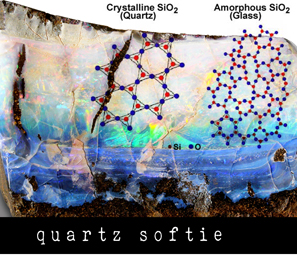
q u a r t z s o f t i e
This category refers exclusively to opal, which has the same chemical composition as quartz - SiO2 - but
lacks the crystal organization. Opal takes its name from the Sanskrit upala, meaning "precious stone".
It is hardened silica gel and contains 5-10% water in microscopic pores, and it can crack and lose its color
if it dries out entirely. Opal is a widespread and common stone formed by
deposition from silica-rich flowing water at relatively low temperatures. As the name implies, common
or "potch" opal is the most common and opaque in appearance without the color play seen in precious opal.
Precious opal forms in undistrubed spaces (cavities or veins) where clean silica
solutions can settle over hundreds or thousands of years. The color play in precious opal arises from diffration
of light through these silica spheres; the larger the spheres, the greater the range of color. Until the 1900s,
white opal from Hungary and Slovakia was the primary source of precious opal, but with the discovery of opal
deposits in Australia in the late 1800s, Australia has since become the primary source. It is also the only
supplier of the rare black opal. Intense orange-red fire opal is found in Mexico and Honduras. The most
valuable opals tend to show both color play (flashes of color) and opalescence (translucent glow).
Opals grouped here:
blue opal,
boulder opal,
fire opal,
opal,
peruvian opal,
pink opal.
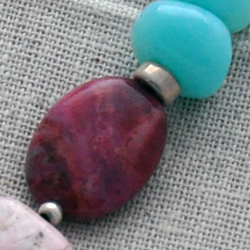
Brilliant
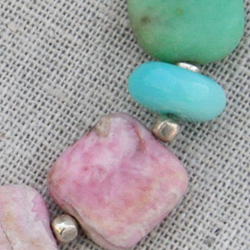
Lovelies
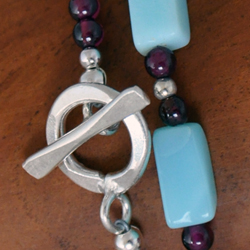
Sorbet
Blue opal is a common opal found in Peru and parts of the US. It's milky in appearance and
may include rock matrix. It does not show color play or opalescence, but the blue color
is often quite lovely.
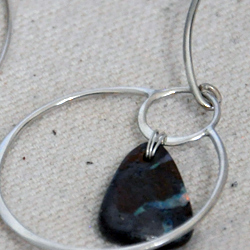
Sentient
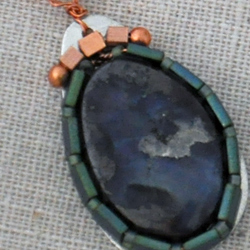
Arid Country
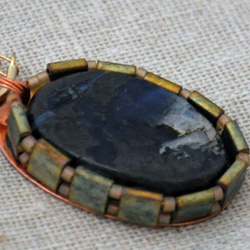
Amulet

Talisman
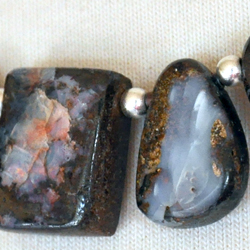
Boulder
Boulder opal is exclusive to opal-rich fields in western Queensland, Australia. It is a thin
film of precious opal over an ironstone matrix, a dark stone, giving the stone the appearance of black opal but
at lower cost. Boulder opals are often found in freeform shapes to optimize the distribution of opal and its
appearance in the dark matrix. Color play is common and striking in these stones.

Peaches & Cream
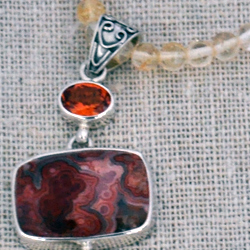
Sunny Prospects

Sunshine
Fire opal is known for its vivid red-orange body color rather than color play. Fire opal can
be milky to transparent, and generally, the more transparent a stone is, the more valuable
it is. Mexico is the primary source of fire opals, but they are also found in Australia, the
US and Canada.

Eunomia
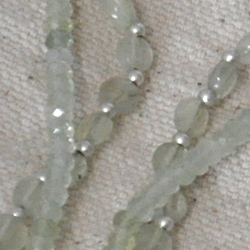
Prehnite Delight
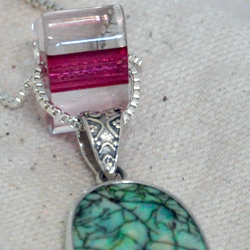
Room for Light
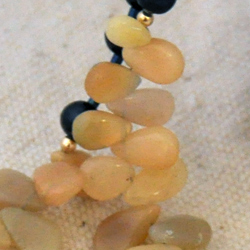
Down Under
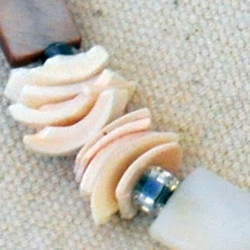
Thalassa
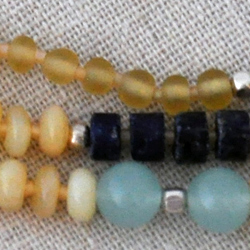
Archetype

Cleopatra
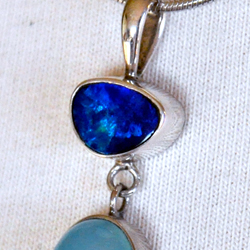
Amphitrite
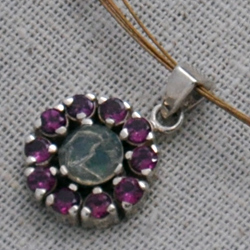
Modern Fairytale

Europa
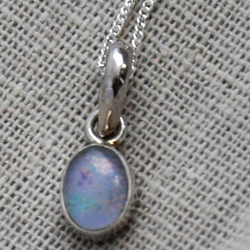
Fiery
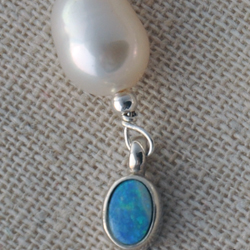
Radiance
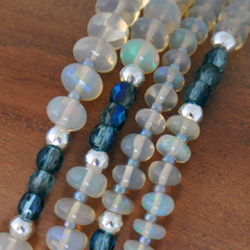
Noosa Heads
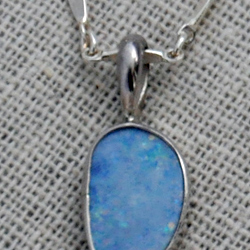
Gossamer

Write a Letter
White and blue precious opals show good color play and opalescence. White opal tends to be a light
colored stone with a nice glow and flashes of bright color. Blue opal is similar though with a
blue base color. Australia is the primary source, but they are also found in the US, Brazil and
Ethiopia.
•• p e r u v i a n o p a l
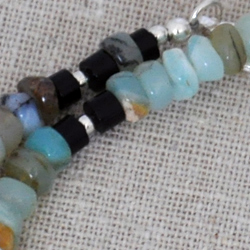
Tipon
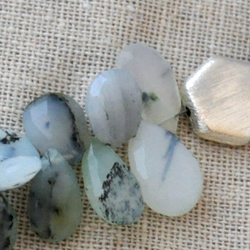
Monterey
Peruvian opal is also known as Andean opal and comes from regions of the Andes mountains in Peru.
It is a translucent blue-green stone with black
dendrite inclusions, giving it terrific pattern. It lacks color play but has plenty of color; trace amounts of copper
and chrysocholla are responsible for the bright blue color. It's gained popularity in recent years, and
it's common to find Peruvian opal dyed to enhance color.
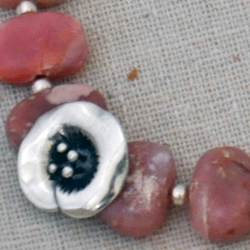
Aloha

Tiger People
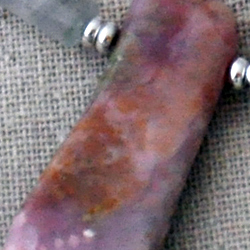
Worry Stone

Hospitality
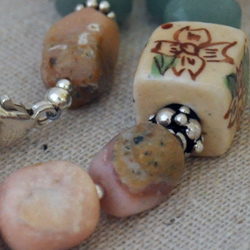
Tranquility
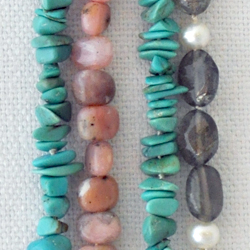
Variety
Pink opal is a common opaque opal with charming soft pink color resulting from a mix of opal,
palygorsite and chalcedony. It is found in the Andes mountains as well as Australia.

